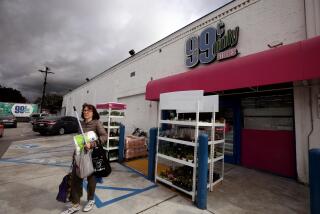San Bruno gives the lie to PG&E’s commitment to safety
Peter Darbee, the outstandingly complacent chief executive of PG&E Corp., has long made it a talking point that safety is his No. 1 concern.
“Ensuring the safety of our employees and the public” is “our most important priority,” he wrote in the company’s 2009 “corporate responsibility report.”
But PG&E, the state’s largest utility company, makes a habit of leaving things at the talking-point stage. The grim harvest of its failure to supplement lip service with action is currently visible in the devastated families and homes of San Bruno. That’s the Bay Area community where a natural gas pipeline, the maintenance of which is indisputably PG&E’s responsibility, blew up Sept. 9.
Fair-minded people, and certainly PG&E spokespersons, will say that assigning blame for the disaster is premature until its cause becomes clear, which may not happen for weeks. They’re not wrong, exactly.
But it’s not premature to examine PG&E’s management culture and connect the dots to the San Bruno disaster. There’s ample evidence that the company places customer and community service low among its priorities, and corporate responsibility even lower.
PG&E is, however, very good at producing elegant four-color paeans to its “commitment” to its communities and customers. If gloss and elegance were all it takes, PG&E would be one of the most admired corporations in California, instead of one of the most detested.
Let’s look at the record. Exhibit 1 is its campaign this year for Proposition 16, a constitutional amendment PG&E concocted specifically to enhance its monopoly position in its service region but marketed (quite fraudulently) as merely an expansion of the “right to vote.”
PG&E spent $46 million on this frolic. The ballot initiative was defeated. The biggest margins against it came from voters in the utility’s service districts, underscoring the wisdom of the adage “familiarity breeds contempt.”
Darbee, the debacle’s godfather, has been paid nearly $30 million over the last three years. He appears unfazed by the resounding rejection of his commando raid on the state Constitution.
Before the election, he told Wall Street that, win or lose, there would be plenty of time to “mend any broken fences.” After the election, he said he recognized that “it’s important to really reach out to people and to work constructively with them and engage in an ongoing constructive dialogue … we have been doing that.”
Darbee seems to consider the sum he spent on Proposition 16 to be trivial, and the infection it caused the political process transitory. He may be about to learn that the damage it caused to PG&E’s credibility as a public-spirited corporation was profound and lasting.
“Never has one company spent so many millions to burn so many bridges,” Mark Toney, executive director of The Utility Reform Network, or TURN, a San Francisco utilities watchdog, told me.
Is the PG&E board happy with Darbee? The company’s 11 outside directors hold a total of 15 other directorships and four high-level executive posts, by my count, so maybe they’re just too busy to pay attention. If they ever get around to it, they might ask whether he is really the right person to be in charge.
The Prop. 16 campaign is only one indicator of the company’s wretched culture. There’s its approach to community choice aggregators, a special form of municipal utility created to provide energy from renewable sources. (Killing off CCAs was the chief goal of Proposition 16.) PG&E’s marketing campaign against CCAs has been so underhanded and improper that the state Public Utilities Commission twice wrote the company to warn it was breaking the law and had better knock it off.
PG&E seems to be a lot more casual about performing urgent maintenance on its system than it was about the needs of the initiative campaign.
During the campaign season, PG&E let few fortnights pass without replenishing its war chest, adding seven-figure sums, or more, eight times from January through May.
Has it shown as much solicitude for a section of natural gas pipeline in South San Francisco it has ranked among its “top 100 highest risk line sections”? The 1.42-mile section is about a mile and a half from the blast site. The utility said in a public filing that “the risk of a failure at this location is unacceptably high.”
Yet PG&E has had the devil’s own time coming up with the $5 million needed to repair the line, even though it identified the line as high risk in 2007 and got approval from the PUC to replace it at ratepayers’ expense in 2009. Now it’s planning to get around to the job in 2013.
“PG&E certainly can’t say, ‘We don’t have the money to do it,’ ” said Toney, whose group drew attention to the matter last week.
Northern and Central California ratepayers have learned from bitter experience not to trust PG&E. One data point comes from the company’s disastrous rollout of “smart” gas and electrical meters starting in 2007. The installation of the meters, which give almost minute-by-minute readouts of power use, led to an explosion of complaints about mysteriously soaring electric bills.
An independent study commissioned by the PUC found that the meters worked fine, but the same couldn’t be said for PG&E’s customer-service reps.
The study found that the reps “lacked professionalism” in dealing with customers, which makes them sound as if they were about as polite as your average rent collector. They often failed to follow up on complaints and consistently treated complainants as “wrong, until the customer(s) proved … that they were right.”
That last point is interesting in light of some San Bruno residents’ claims — unverified at this point — that they had reported gas odors to PG&E days or weeks before the explosion, and that PG&E failed to respond.
Since the election, Darbee has tried to burnish PG&E’s community responsibility cred by coming out against November’s Proposition 23, a sleazy oil-industry initiative that would eviscerate California’s pioneering anti-greenhouse gas program. Yet thus far, according to state campaign finance disclosures, PG&E’s donations to fight Proposition 23 add up to … hang on while I do the math ... zero. More lip service?
PG&E said for the record that it “will not waver in its support of San Bruno.” It said it’s committed to “supporting” full recovery of the neighborhood and assuring the safety of its gas pipelines. PG&E’s record suggests that this is largely PR. In solidarity with this huge utility’s suffering clientele, I can only say, please, prove me wrong.
Michael Hiltzik’s column appears Sundays and Wednesdays. Reach him at mhiltzik@latimes.com, read past columns at latimes.com/hiltzik, check out facebook.com/hiltzik, and follow @latimeshiltzik on Twitter.







